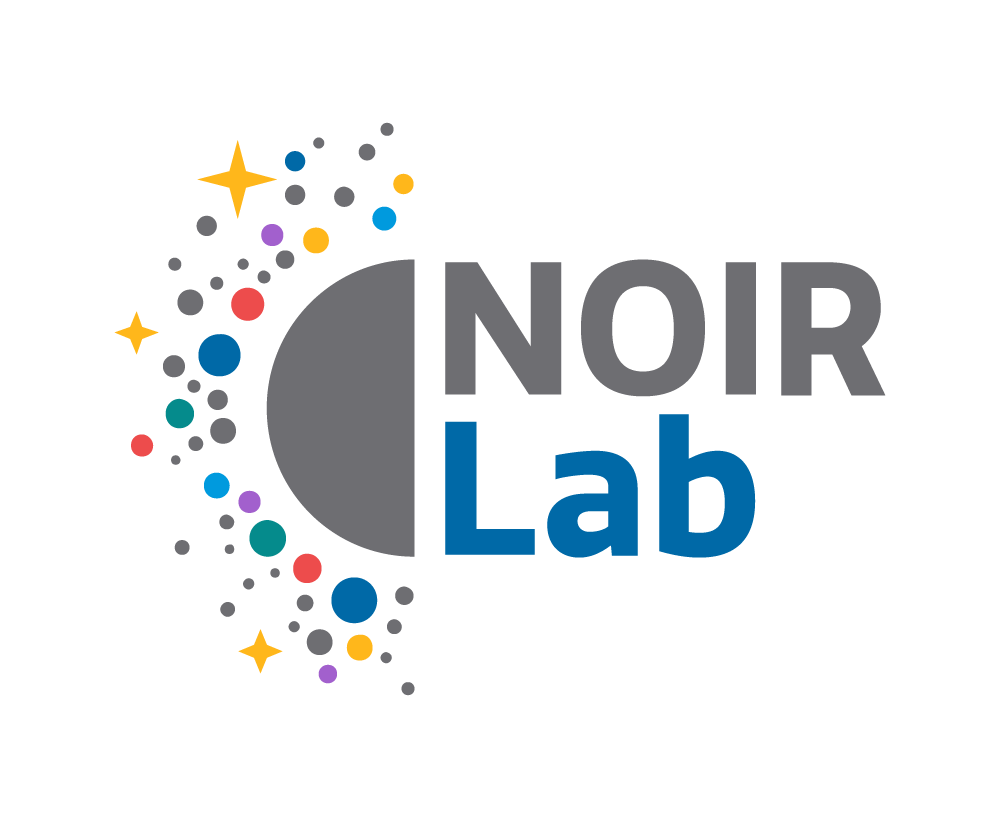NOIRLab Telescopes Partner in New Observatory Coordination Service
The HEROIC service will provide the entire astrophysics community with a single destination to coordinate resources around an astronomical event
2 October 2024
Multi-messenger astronomy is a powerful new tool for exploring the cosmos that combines the information from multiple types of signals to understand a single astronomical source or event. The four messengers that astronomers study are light, cosmic rays, neutrinos and gravitational waves.
Because a source can change rapidly, it’s critical that observations of these messengers occur simultaneously or within a short time span so that astronomers capture their properties before the source changes. However, it’s quite the challenge to coordinate follow-up from multiple optical observatories across the globe — each with its own instruments — while minimizing duplication and maximizing the value of the combined dataset.
That’s why the U.S. National Science Foundation has awarded $2 million in funding to the National Center for Supercomputing Applications (NCSA) and the Center for AstroPhysical Surveys (CAPS), in collaboration with NSF NOIRLab and Las Cumbres Observatory, to build a service that allows researchers to coordinate their astronomical results from observatories across the globe in almost real time.
The proposed Hop-Enabled Real-time Observatory Information and Coordination (HEROIC) service will provide the entire astrophysics community with a single destination where they can quickly see which telescope can point to a multi-messenger source, what observations are currently being scheduled or executed, and which groups to coordinate with. By providing availability reports for a worldwide network of ground- and space-based facilities, HEROIC will be a central component in a fully integrated, interoperable cyberinfrastructure for astrophysics.
“Multi-messenger astronomy is one of the most exciting aspects of modern science and astronomers at NOIRLab are delighted to be joining the HEROIC project,” says Tom Matheson, Interim Director of NOIRLab’s Community Science and Data Center and HEROIC project co-Principal Investigator. “NOIRLab staff will build the systems that let our telescopes share information, making our facilities among the first that HEROIC will use to provide astronomers worldwide with a comprehensive view of the resources available to them.”
The first NOIRLab telescopes that will be included in HEROIC are those that are most useful for multi-messenger follow-up — the NSF Víctor M. Blanco 4-meter Telescope at Cerro Tololo Inter-American Observatory, a Program of NSF NOIRLab, and the twin International Gemini Observatory telescopes, funded in part by the NSF and operated by NSF NOIRLab. Eventually, all NOIRLab-operated telescopes will be incorporated.
“We’re incredibly fortunate to be able to collaborate with NSF NOIRLab and Las Cumbres Observatory to build HEROIC incrementally,” says Gautham Narayan, Deputy Director of CAPS and HEROIC project Principal Investigator. “They operate some of the best and most widely used telescopes in the world, and have some of the most experienced astrophysicists anywhere, with deep knowledge of the science and the facilities. By working closely with them, we can identify and fix key issues, and build a useful and practical service that can be steadily extended to other missions.”
The opportunities for coordinated observations of multi-messenger events will soon see a huge increase once NSF–DOE Vera C. Rubin Observatory begins operation in 2025. With its powerful camera and wide field of view, Rubin will find faint multi-messenger sources and point other telescopes in the right direction for follow-up observations. The work with HEROIC, combined with the discovery capabilities of Rubin, will bring NOIRLab to the forefront of multi-messenger astronomy.
More information
NSF NOIRLab (U.S. National Science Foundation National Optical-Infrared Astronomy Research Laboratory), the U.S. center for ground-based optical-infrared astronomy, operates the International Gemini Observatory (a facility of NSF, NRC–Canada, ANID–Chile, MCTIC–Brazil, MINCyT–Argentina, and KASI–Republic of Korea), Kitt Peak National Observatory (KPNO), Cerro Tololo Inter-American Observatory (CTIO), the Community Science and Data Center (CSDC), and Vera C. Rubin Observatory (operated in cooperation with the Department of Energy’s SLAC National Accelerator Laboratory). It is managed by the Association of Universities for Research in Astronomy (AURA) under a cooperative agreement with NSF and is headquartered in Tucson, Arizona. The astronomical community is honored to have the opportunity to conduct astronomical research on I’oligam Du’ag (Kitt Peak) in Arizona, on Maunakea in Hawai‘i, and on Cerro Tololo and Cerro Pachón in Chile. We recognize and acknowledge the very significant cultural role and reverence that these sites have to the Tohono O’odham Nation, to the Native Hawaiian community, and to the local communities in Chile, respectively.
Links
Contacts
Tom Matheson
HEROIC Project PI
NSF NOIRLab
Email: tom.matheson@noirlab.edu
Josie Fenske
Jr. Public Information Officer
NSF NOIRLab
Email: josie.fenske@noirlab.edu


